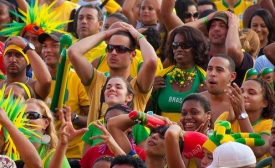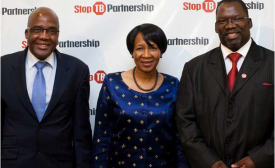brics
As the BRICS Summit meets hot on the heels of the FIFA World Cup, also in Brazil, a remarkable trend is apparent. Most of the major global sports events such as the World Cup and the Olympic Games are taking place in the emerging powers of the 21st century. Russia, China and South Africa are all hosting the World Cups or Olympics along with Brazil in recent years. This phenomenon reflects a trend to adopt global sports events as a diplomatic tool to enhance prestige and become more socially accepted in the established world order.
Russian President Vladimir Putin began a six-day Latin American tour aimed at boosting trade and ties in the region with a stop Friday in Cuba, a key Soviet ally during the Cold War that has backed Moscow in its dispute with the West over Ukraine. The two countries signed about a dozen accords in areas such as energy, industry, health and disaster prevention. Russian companies will participate in petroleum projects around Boca de Jaruco on the island's north coast, and that cooperation will extend to offshore oil deposits, Cuban government website Cubadebate said.
Leaders of the five largest emerging economies will meet July 13-16 to finalize their first joint project: a new international development bank. The countries, known as BRICS (Brazil, Russia,India, China, and South Africa) have spent many years trying to find a common goal. Together they have more than 40 percent of the world’s population. And they share an interest in challenging many of the norms set by the West. Yet each nation is quite different in governance and ambition.
When Prime Minister Narendra Modi flies to Brazil mid-July, it will be a welcome respite from the heat and cacophony of post-budget Delhi. President Dilma Rousseff's grand welcome to the sixth Brics summit will be energising. The summit's pomp and ceremony will, however, be less important than Modi's 'side meetings', especially with Chinese president Xi Jinping. It will allow him to take measure of the man who has emerged as one of the most powerful and ambitious leaders of modern China.

The World Cup might not be all hearts and roses for Brazil.
A specter is haunting Washington, an unnerving vision of a Sino-Russian alliance wedded to an expansive symbiosis of trade and commerce across much of the Eurasian land mass — at the expense of the United States. And no wonder Washington is anxious. That alliance is already a done deal in a variety of ways: through the BRICS group of emerging powers (Brazil, Russia, India, China, and South Africa); at the Shanghai Cooperation Organization, the Asian counterweight to NATO; inside the G20; and via the 120-member-nationNon-Aligned Movement (NAM).

In her essay on the different types of public diplomacy, American university professor R.S. Zaharna identified policy networking strategy and coalition building as third-tier relationship-building initiatives (Snow and Taylor, 2008).
When, fifteen years ago, Vladimir Putin was appointed Prime Minister under the ailing Boris Yeltsin, few would have thought that he was to become one of Russia’s longest-serving political leaders in living memory. Fifteen years into his “era,” Putin has reached unassailable heights of prestige, masterly defeating his would-be challengers among street protesters and oligarchs and getting more than a bang for his ruble on the international stage.







